| Columns Retired Columns & Blogs |
Rotel RB-1090 power amplifier Measurements
Sidebar 3: Measurements
After running for one hour at 1/3 power, the Rotel RB-1090's case was quite hot, but not abnormally so. DC offset measured 1.8mV in the left channel, 1.1mV in the right. The amplifier is noninverting, with pin 2 positive in its balanced mode. Voltage gain into 8 ohms measured 28.8dB (22dB balanced). Unless noted otherwise, all measurements were taken with the amplifier running in unbalanced mode.
The RB-1090's input impedance measured 33.2k ohms (47.9k ohms balanced). The maximum measured output impedance was 0.16 ohms, at 20kHz into a 4 ohm load, this decreasing to less than 0.1 ohm at 1kHz. This is not unusually low for a solid-state amplifier, but low enough that any effect on the amplifier's frequency response with a real load will be small. The signal/noise readings (ref. 2.83V, rounded to the nearest dB) were 94dB from 22Hz to 22kHz, 86dB from 10Hz to 500kHz, and 94dB A-weighted. The corresponding balanced values were 82dB, 75dB, and 83dB.
The amplifier's frequency response is shown in fig.1. Only the small (less than 0.1dB) dip at 5kHz distinguishes the response with a (simulated) loudspeaker load from that with pure resistance. The 10kHz squarewave (fig.2) is as good as any we've seen, with a fast risetime, only a slight rounding of the leading edge (some rounding is virtually universal with modern amps), and no overshoot or ringing. Like the S/N readings, the crosstalk in fig.3 is slightly worse in balanced mode, but nevertheless low enough to be audibly irrelevant.
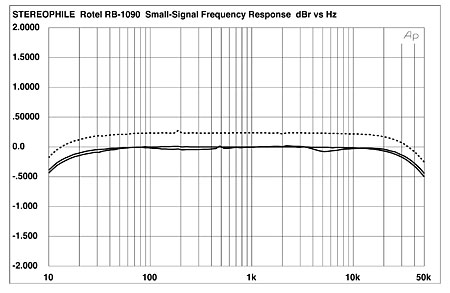
Fig.1 Rotel RB-1090, frequency response at (from top to bottom at 6kHz): 2W into 4 ohms, 1W into 8 ohms, and 2.828V into simulated loudspeaker load, (0.5dB/vertical div., right channel dashed).
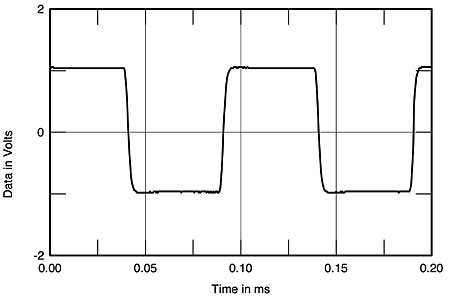
Fig.2 Rotel RB-1090, small-signal 10kHz squarewave into 8 ohms.

Fig.3 Rotel RB-1090, channel separation vs frequency (from top to bottom): R–L, L–R, balanced; L–R, R–L, unbalanced (10dB/vertical div.).
The THD+noise percentage vs frequency behavior is shown in figs.4 and 5. Measured distortion is higher in balanced mode (an unusual finding, presumably due to the extra circuitry), but nevertheless still respectably low. The THD waveform in fig.6 into 4 ohms indicates a predominant third harmonic, plus noise. Fig.7 shows the distortion spectrum of a 50Hz input signal at an output of 2/3 rated power (469W) into 4 ohms. The only distortion artifact above –80dB (0.01%) is the third harmonic at 150Hz (–74dB, or 0.02%). Fig.8 plots the IM distortion of a 19+20kHz waveform at 383W into 4 ohms. Again, only one component is higher than –80dB: the artifact at 18kHz (–72.4dB, or about 0.025%). The distortion at 2/3 power into 8 ohms (not shown) is even lower. These are very fine results.
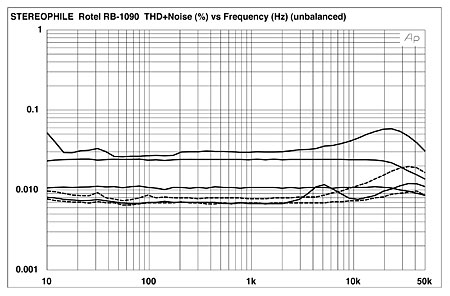
Fig.4 Rotel RB-1090, THD+noise (%) vs frequency at (from top to bottom at 4kHz): 4W into 2 ohms, 2W into 4 ohms, 2.83V into simulated loudspeaker load, and 1W into 8 ohms (right channel dashed).
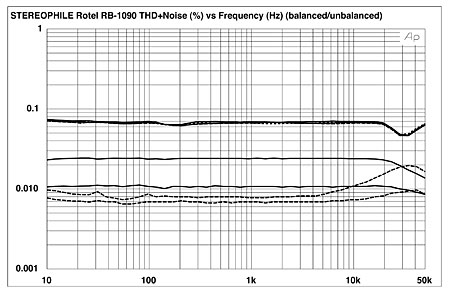
Fig.5 Rotel RB-1090, THD+noise (%) vs frequency at (from top to bottom at 4kHz): 1W into 8 ohms and 2W into 4 ohms, balanced; 2W into 4 ohms and 1W into 8 ohms, unbalanced (right channel dashed).
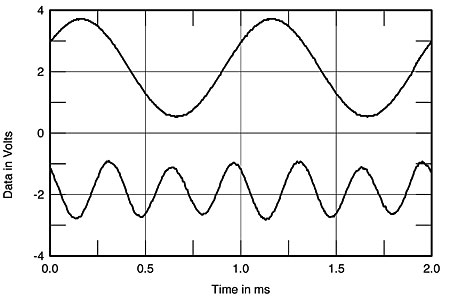
Fig.6 Rotel RB-1090, 1kHz waveform at 2W into 4 ohms (top), distortion and noise waveform with fundamental notched out (bottom, not to scale).
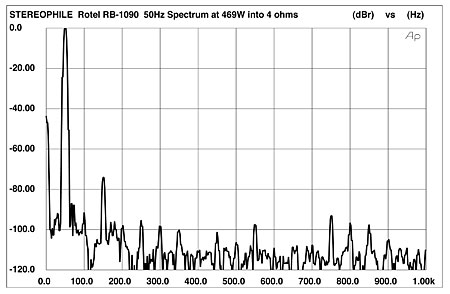
Fig.7 Rotel RB-1090, spectrum of 50Hz sinewave, DC–1kHz, at 469W into 4 ohms (linear frequency scale).
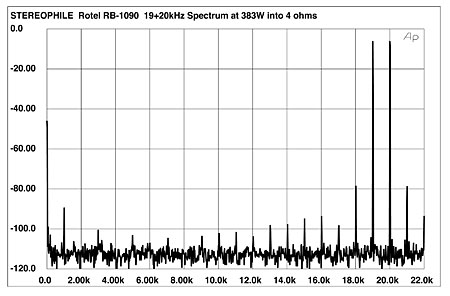
Fig.8 Rotel RB-1090, HF intermodulation spectrum, DC–22kHz, 19+20kHz at 383W into 4 ohms (linear frequency scale).
Because the RB-1090 is rated only into a minimum power of 4 ohms, and also to avoid thermal risk to our test-bench load, I ran the continuous THD+noise vs output power curves only into 4 and 8 ohms. As fig.9 shows, there is clearly no shortage of power with this amp. I also ran discrete clipping measurements with a continuous signal, but only into 8 ohms, again because of test-load limits. Into 8 ohms, both channels driven, the Rotel clipped (1% THD+N, to the nearest watt) at 407W (26.1dBW) in the left channel (power line 114V), and 410W (26.1dBW) in the right (power line 114V). With one channel driven, clipping occurred at 437W (26.4dBW, 116V line).
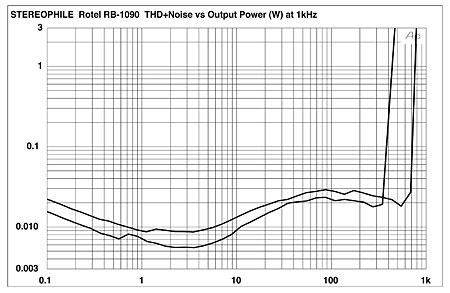
Fig.9 Rotel RB-1090, distortion (%) vs continuous output power into (from bottom to top) 8 ohms and 4 ohms.
John Atkinson tested the amplifier into lower impedances using a low-duty-cycle 1kHz toneburst generated by the Miller Audio Research Amplifier Profiler. The results are shown in fig.10, and even though the amplifier is working harder into 2 ohms (blue trace) and 1 ohm (green trace) than it is into 8 ohms (black) and 4 ohms (red), the overall distortion level is still very low. The clipping characteristic is quite "soft," with a relatively gradual increase in THD up to the 1% point. This will make the amplifier tend to sound more powerful, except the big Rotel doesn't need help in that respect: with the toneburst and one channel driven it delivers 527W into 8 ohms and a whopping 2825W into 1 ohm!
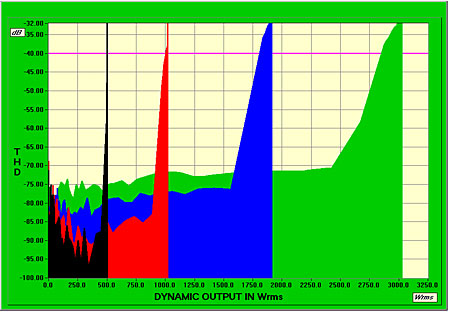
Fig.10 Rotel RB-1090, distortion (%) vs 1kHz burst output power into 8 ohms (black trace), 4 ohms (red), 2 ohms (blue), and 1 ohm (green).
Altogether, a solid set of test-bench results from the Rotel RB-1090.—Thomas J. Norton
- Log in or register to post comments




































